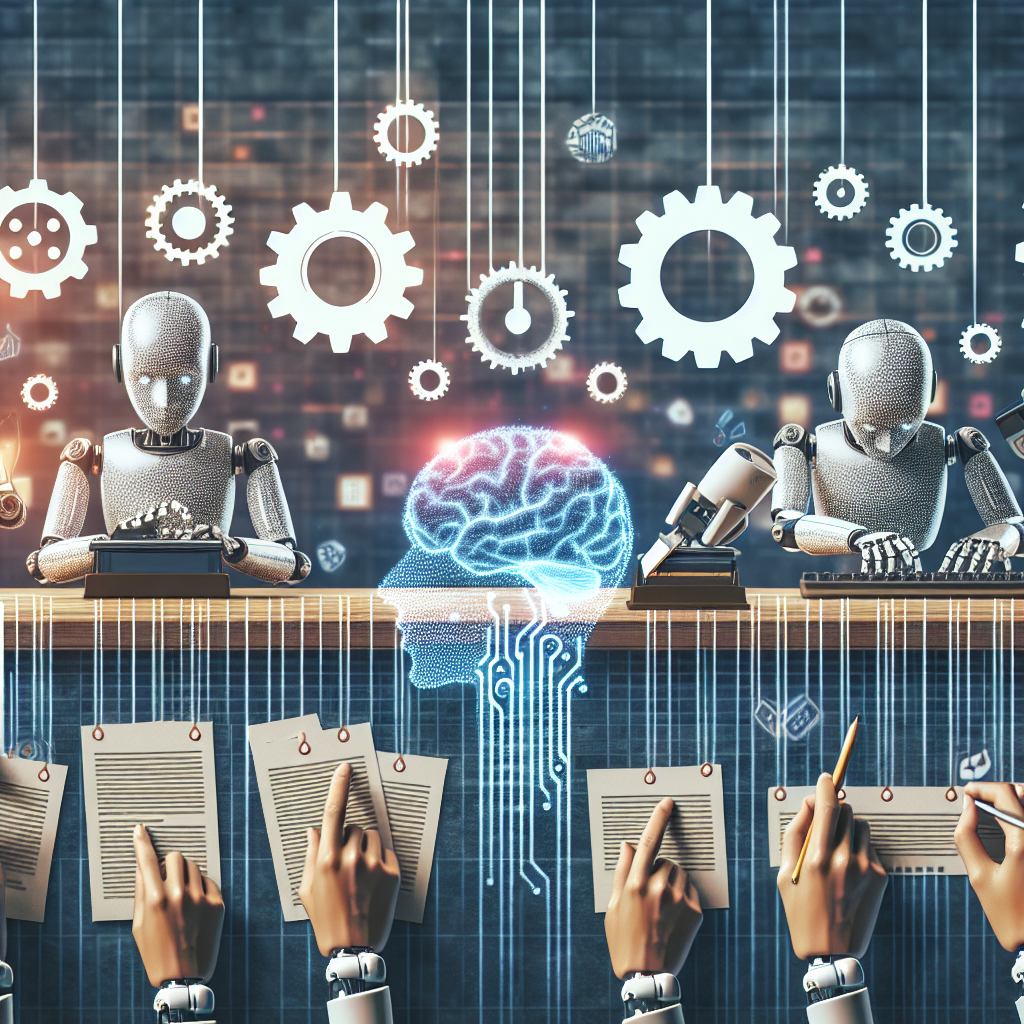Artificial intelligence (AI) automation has been transforming various industries, and the government sector is no exception. With the increasing demand for efficient and cost-effective services, government agencies are turning to AI automation to streamline their operations and improve service delivery.
In this article, we will provide an overview of AI automation in government services, its benefits, challenges, and potential applications. We will also address common questions and concerns about the use of AI in government agencies.
Benefits of AI Automation in Government Services
AI automation offers a wide range of benefits to government agencies, including:
1. Improved efficiency: AI automation can perform repetitive tasks faster and more accurately than humans, leading to increased productivity and efficiency in government operations.
2. Cost savings: By automating routine tasks, government agencies can reduce labor costs and reallocate resources to more critical functions.
3. Enhanced decision-making: AI algorithms can analyze large amounts of data and provide valuable insights to help government agencies make better decisions.
4. Improved citizen services: AI automation can streamline processes such as permit applications, tax filings, and benefit claims, making it easier and more convenient for citizens to interact with government agencies.
5. Increased transparency: AI algorithms can help government agencies detect fraud, identify patterns of abuse, and ensure compliance with regulations, leading to greater transparency and accountability in government operations.
Challenges of AI Automation in Government Services
While the benefits of AI automation in government services are significant, there are also challenges that need to be addressed, including:
1. Data privacy and security: Government agencies need to ensure that sensitive data is protected and used responsibly when implementing AI automation.
2. Bias and discrimination: AI algorithms can inherit biases from the data they are trained on, leading to discriminatory outcomes. Government agencies must address bias and ensure fairness in their AI systems.
3. Regulatory compliance: Government agencies need to comply with regulations and standards when implementing AI automation to ensure that it does not violate privacy rights or ethical guidelines.
4. Workforce displacement: AI automation could lead to job losses for government employees who perform routine tasks that can be automated. Government agencies need to consider the impact on their workforce and provide support for retraining and upskilling.
Applications of AI Automation in Government Services
AI automation can be applied in various areas of government services, including:
1. Customer service: AI-powered chatbots can assist citizens with inquiries, provide information, and help them navigate government services more efficiently.
2. Fraud detection: AI algorithms can analyze data patterns to detect fraudulent activities, such as tax evasion, benefit fraud, and identity theft.
3. Predictive analytics: AI can analyze large datasets to predict trends, forecast demand, and optimize resource allocation in areas such as transportation, healthcare, and public safety.
4. Regulatory compliance: AI automation can help government agencies monitor compliance with regulations, detect violations, and enforce penalties more effectively.
5. Document processing: AI algorithms can automate document processing tasks such as data entry, classification, and routing, reducing errors and improving efficiency.
FAQs about AI Automation in Government Services
Q: Will AI automation replace government employees?
A: While AI automation may automate certain tasks currently performed by government employees, it is unlikely to replace human workers entirely. Instead, AI automation is expected to augment human capabilities, allowing government employees to focus on higher-value tasks that require human judgment and creativity.
Q: How can government agencies ensure that AI systems are fair and unbiased?
A: Government agencies can address bias and discrimination in AI systems by carefully selecting and curating training data, monitoring AI algorithms for bias, and implementing fairness measures to mitigate discriminatory outcomes. Transparency, accountability, and oversight are also essential to ensure that AI systems are used responsibly and ethically.
Q: What are some examples of successful AI automation projects in government services?
A: Several government agencies have implemented AI automation projects with successful outcomes. For example, the Internal Revenue Service (IRS) uses AI algorithms to detect tax fraud and identify noncompliant taxpayers. The Department of Veterans Affairs (VA) uses AI-powered chatbots to assist veterans with healthcare appointments and benefits claims. The Singapore government has implemented AI automation in areas such as public transportation, healthcare, and urban planning to improve service delivery and enhance citizen satisfaction.
In conclusion, AI automation has the potential to revolutionize government services by improving efficiency, reducing costs, and enhancing citizen services. While there are challenges to address, such as data privacy, bias, and workforce displacement, the benefits of AI automation in government services are significant. By leveraging AI technologies responsibly and ethically, government agencies can harness the power of AI automation to better serve their constituents and achieve their missions.

